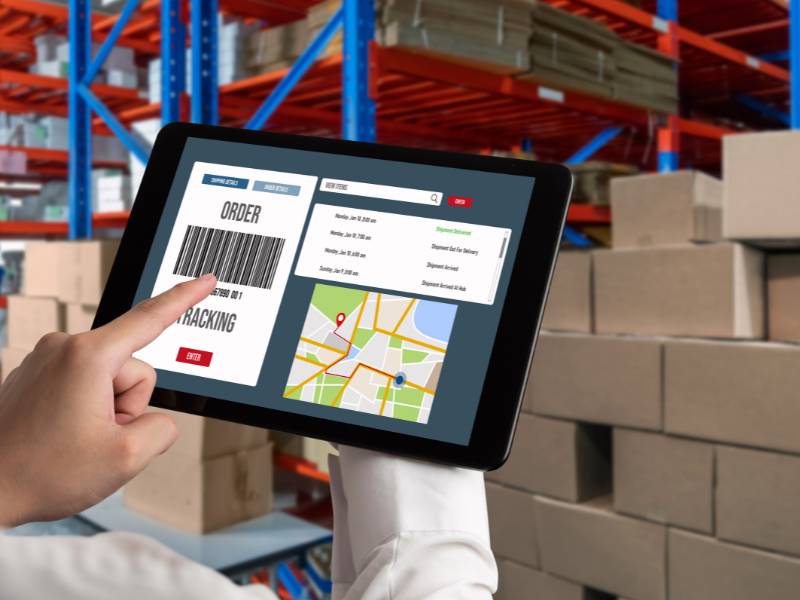In e-commerce, where transactions occur online without face-to-face interactions, transparency is essential for building trust. Transparency means being open and honest in all aspects of your business, which helps customers feel confident about their purchases. In a crowded market, trust is what makes customers choose your business over others. Let’s dive into how transparency in various areas of your business can build trust and credibility.
Initial Website Interaction
The first impression of your website sets the tone for trust. Here’s how to make it count:
- Cookie Consent: Use clear, straightforward language for cookie consent prompts. Explain what cookies are and how they benefit the user. For instance, “We use cookies to personalize your experience and improve our website. Accept cookies for a better shopping experience.”
- Privacy Policies: Make your privacy policy easy to find and understand. Break it down into sections with headers like “What Information We Collect” and “How We Use Your Data.” Include examples, such as “We use your email to send order updates.” See below for a website pop up example.
- Customer Support Accessibility: Clearly display customer support contact information, including phone numbers, email addresses, and live chat options. Make sure these are easy to find on every page, ideally in the header or footer.
- Third-Party Trust Badges: Display trust badges from reputable third parties, such as SSL certification, Better Business Bureau (BBB) accreditation, and trusted payment gateways like PayPal or Stripe. These badges should be prominently displayed on the homepage and checkout pages.
- User-Friendly Design: Ensure your website has a clean, professional, and user-friendly design. This includes fast loading times, intuitive navigation, and mobile responsiveness. A well-designed website signals that you are a legitimate and trustworthy business.
About the Business
Building trust goes beyond transparent data practices; it requires sharing the story and values behind your business. By giving customers a peek into who you are and what you stand for, you create a sense of connection and reliability. This human touch not only enhances credibility but also fosters a deeper relationship with your audience.
- Company Background: Include a detailed “About Us” page. Share how and why the company was founded, and what motivates you. For example, “We started in a small garage with a mission to provide eco-friendly products that don’t compromise on quality.”
- Meet the Team: Introduce key team members with photos and short bios. Highlight their expertise and roles within the company. For instance, “Meet Jane, our Head of Customer Service, who ensures every query is answered promptly.”
- Mission Statement: Clearly articulate your company’s mission and values. This helps customers understand what drives your business and aligns them with your vision. Example: “Our mission is to provide high-quality, sustainable products while supporting fair labor practices.”
- Behind-the-Scenes Content: Share behind-the-scenes content to give customers a glimpse of your operations. This could be in the form of videos, photos, or blog posts.
- Customer Stories: Feature stories or testimonials from satisfied customers. This not only showcases your products in real-life scenarios but also builds social proof.
By providing a comprehensive view of your business, including its history, mission, team, and customer experiences, you create a transparent and relatable brand that customers can trust and feel connected to.
Product Transparency
Transparency in product information is crucial for building trust with your customers. By providing detailed and accurate product information, you empower shoppers to make informed decisions and reduce the likelihood of dissatisfaction and returns. This level of openness not only showcases your commitment to quality and honesty but also enhances customer confidence in your brand. Here’s how:
- Detailed Descriptions: Provide comprehensive product details, including materials, dimensions, and care instructions. Use bullet points for clarity.
- Customer Reviews: Display honest customer reviews, including negative ones, with responses from your team addressing any issues. This shows you value feedback and are committed to improvement.
- Transparency in Product Origin: Clearly state where your products are made and sourced. Include information about the manufacturing process and ethical standards.
- Quality Assurance: Explain your quality assurance processes and any certifications your products hold. This reassures customers of the product’s reliability and safety.
Pricing Transparency
When customers understand exactly what they are paying for, it reduces confusion and frustration, leading to a smoother purchasing experience and higher customer satisfaction. Clear, upfront pricing can significantly reduce cart abandonment rates and foster long-term customer relationships. Consider these tactics:
- Breakdown of Costs: Show a detailed breakdown of costs at checkout, including shipping and taxes. Use a format like, “Subtotal: $50, Shipping: $5, Tax: $2.50, Total: $57.50.”
- No Hidden Fees: Clearly state if there are no hidden fees. For example, “What you see is what you pay. No hidden fees.”
- Discounts and Promotions: Be transparent about how discounts and promotions are applied. Ensure the discount is visible at checkout and explain any terms and conditions upfront.
- Subscription Services: If offering subscription services, provide clear information about billing cycles, renewal dates, and how to cancel.
- Price Match Guarantee: If you offer a price match guarantee, clearly explain the policy and the steps customers need to take to claim it.
Order Fulfillment Process
Transparency in this area means providing clear and consistent communication from the moment an order is placed until it arrives at the customer’s doorstep. This not only enhances customer satisfaction but also reduces anxiety and uncertainty about their purchase. Here’s what to do:
- Order Confirmation: Send immediate order confirmation emails with details like order number, items purchased, and expected delivery date.
- Real-Time Tracking: Provide real-time tracking information. Use tools that update customers automatically via email or SMS. Partnering with reliable logistics providers like Badger Fulfillment Group can enhance this transparency.
- Handling Delays: Communicate proactively if there are any delays in the order fulfillment process. Provide updates and offer solutions, such as discounts or free shipping on future orders, to maintain customer trust.
Post-Purchase Communication
The customer journey doesn’t end at the point of purchase; it extends into the post-purchase phase, where ongoing engagement can significantly enhance customer satisfaction and loyalty. Transparent and thoughtful communication after a sale shows customers that you value their experience and are committed to their satisfaction. Strengthen relationships with these strategies:
- Follow-Up Emails: Send personalized follow-up emails thanking customers for their purchase, asking for feedback, and offering customer support contacts.
- Surveys and Feedback: Use short surveys to gather feedback. Ask specific questions like, “How satisfied are you with the product quality?” and provide space for additional comments.
- Loyalty Programs: Offer loyalty programs that reward repeat purchases. Clearly explain how customers can earn and redeem points.
- Product Care and Usage Tips: Provide helpful information on how to care for or make the most out of the purchased product. This can enhance the customer’s experience and satisfaction.
- Personalized Offers: Based on the customer’s purchase history, send personalized offers and recommendations for related products.
By focusing on transparent and personalized post-purchase communication, you can build stronger relationships with your customers. This ongoing engagement not only increases customer satisfaction but also encourages repeat business and brand loyalty. Show your customers that you care about their experience even after the sale is complete.
Sustainable and Ethical Practices
Transparency in e-commerce extends beyond transactions to encompass a business’s entire framework, including ethical sourcing, sustainable initiatives, and partnerships with ethical organizations. Showcasing your commitment to these practices builds trust with conscientious consumers who value corporate responsibility:
- Ethical Sourcing: Share details about your sourcing practices. For example, “Our cotton is sourced from farms that use sustainable farming practices and pay fair wages.”
- Sustainability Initiatives: Highlight any sustainability initiatives, such as using recyclable packaging. Provide data and examples, like, “Last year, we reduced our plastic use by 30% by switching to biodegradable packaging.”
- Partnerships: Highlight partnerships with organizations that share your commitment to sustainability. For example, partnering with Badger Fulfillment Group, known for our solar-powered warehouses, showcases a dedication to eco-friendly practices. Example: “We partner with Badger Fulfillment Group, whose solar-powered warehouse help us minimize our carbon footprint and support our commitment to sustainability.
By openly sharing information on these practices, businesses appeal to conscientious consumers, fostering trust and credibility. Prioritizing transparency in ethical and sustainable practices enhances brand perception and cultivates long-term customer loyalty.
Security Measures
Transparent communication about your security measures not only shows your commitment to safeguarding customer privacy but also reassures customers that their information is secure. Implementing robust security protocols is essential for building trust.:
- SSL Certificates: Display security badges and explain their importance. For example, “Our site uses SSL certificates to encrypt your data, keeping your information safe.”
- Secure Payment Gateways: Use trusted payment gateways and explain their security features. Include a note like, “We use PayPal and Stripe for secure transactions. Your payment information is encrypted and protected.”
- Data Encryption: Briefly explain how data encryption works and its benefits. “Your personal information is encrypted, making it unreadable to unauthorized users.”
- Regular Security Audits: Conduct and communicate regular security audits to ensure your systems are up to date with the latest security protocols and standards.
- Customer Education: Provide information on how customers can protect their own data, such as using strong passwords and recognizing phishing attempts.
Demonstrating a commitment to protecting sensitive information strengthens trust and encourages customers to feel safe when engaging with your brand.
Accessibility and Compliance
Ensure your business meets legal and ethical standards to build trust:
- Compliance Statements: Clearly state your compliance with laws such as GDPR and ADA. For example, “We comply with GDPR regulations to protect your data privacy. Learn more in our Privacy Policy.”
- Customer Rights: Inform customers of their rights. “You have the right to access, correct, or delete your personal data at any time.”
By implementing these strategies, e-commerce businesses can foster trust and credibility. Transparency at every touchpoint not only builds trust but also enhances customer satisfaction and loyalty. Embrace transparency as a core value to create a trustworthy and credible brand that customers can rely on.
Learn More About E-commerce Best Practices and Tools
If you’re interested in learning more about e-commerce best practices, tools, and strategies, check out the following resources. These articles provide in-depth insights into various aspects of e-commerce that can help you build a more trustworthy and successful online business:
- Maximizing Efficiency: The Benefits of Outsourcing Order Fulfillment
- Conversions: Crafting a Winning Strategy
- Ecommerce Platforms: Choosing the Perfect Platform
- SSL Certificates: What is an SSL Certificate?
- GDPR Compliance: General Data Protection Regulation (GDPR) Compliance
- Password Security: Password Security
By exploring these resources, you can deepen your understanding of key e-commerce concepts and apply best practices to enhance the trust and credibility of your online business.





